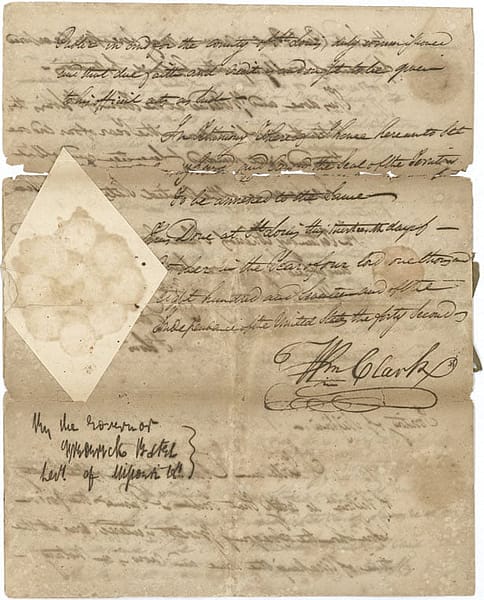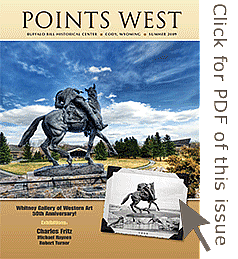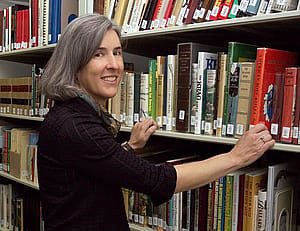
Points West Online: Treasures within Treasures — William Clark letter
Originally published in Points West magazine
Summer 2009
Treasures within Treasures—William Clark Letter
By Mary Robinson
Housel Director, McCracken Research Library
For those of us who work in the McCracken Research Library, the quest for information can sometimes feel like a treasure hunt. Librarians routinely search through primary sources such as letters, scrapbooks, historic photographs, and other unique records of the past in order to answer questions or serve researchers. But along with the pleasure inherent in handling historic documents comes an occasional surprise (Wow, I didn’t know we had that!) or a truly eye-popping discovery. Such was the case in September 2008 as I prepared for the fall meeting of our advisory board.
The story begins with a new acquisition: the library of Charles Galloway Clarke, a professional cinematographer, author, and Lewis and Clark scholar whose The Men of the Lewis & Clark Expedition, a Biographical Roster of the Fifty-One Members (Arthur Clark, 1970) is considered a standard reference in the field. Clarke’s library came to us as a loan in 2003 and, at the request of his family, remained boxed in our vaults until 2007 when it was formally given to us. Library staff inventoried Clarke’s books at the time of the original loan, but only recently began delving into the collection.
As we investigated further, we had a few surprises.
Our first discovery was that Clarke owned books that had previously belonged to the renowned western artist Charles Marion Russell (1864–1926). Russell’s personal bookplate with his signature buffalo skull appears inside the front cover of several volumes such as volume one of the Original Journals of the Lewis and Clark Expedition, 1804–1806 (New York: Dodd, Mead & Company, 1904), which is itself a rare, limited edition. In addition, we found scraps of paper with the artist’s doodles on them used as bookmarks. That our museum owns important Russell paintings and sculptures made this discovery seem highly appropriate, but it was certainly not what we had expected from the Clarke collection.
With the intention of showing off the Russell bookplate to our advisory board, I began leafing through this first volume of the Journals, and my eye fell on something quite different. In a clear envelope, I spied a document browned with age and covered with flowing script. Carefully, I lifted the envelope from the book and turned it over. There on the lower page was the bold, flourishing signature of William Clark, Governor of the Territory of Missouri—a very rare signature.
I nearly fell over.
Captain William Clark, I knew, had been awarded the governorship upon his return from the expedition with Meriwether Lewis. This document bore his seal and a date of October 30, 1817. Governor Clark did not write the document in my hands—about a dispute between traders in St. Louis and New Orleans—but only certified the credentials of the notary public entering a legal protest.
The document describes goods to be shipped up the Mississippi, such as coffee, pepper, mackerel, rum, and molasses. A note with the document indicates Clarke purchased it in 1972. Then he transcribed the document, included a typed copy of the transcript with the original, and stored it all inside the volume. There it had remained hidden for many years.
Post 204
Written By
Nancy McClure
Nancy now does Grants & Foundations Relations for the Center of the West's Development Department, but was formerly the Content Producer for the Center's Public Relations Department, where her work included writing and updating website content, publicizing events, copy editing, working with images, and producing the e-newsletter Western Wire. Her current job is seeking and applying for funding from government grants and private foundations. In her spare time, Nancy enjoys photography, reading, flower gardening, and playing the flute.














